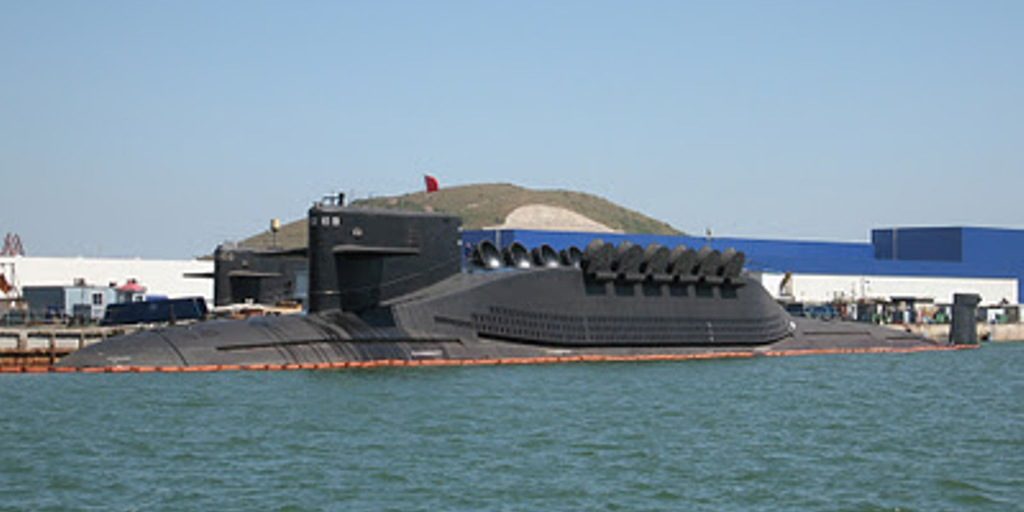Facts
| China/U.S. Designation | JL-2/CSS-NX-14 |
| Missile Variants | DF-31 |
| Mobility and Role | Mobile/Submarine Launched Ballistic Missile |
| Designer/Producer | People’s Republic of China |
| Range | 7,200km |
| Warhead Type and Weight | Nuclear or Conventional/2,800kg |
| MIRV and Yield | MIRV capable (3-8 warheads)/ N/A |
| Guidance System/Accuracy | Inertial, GPS/150-300m CEP |
| Stages/Propellant | Multistage/Solid |
| IOC/Retirement | 2002/Still in service |
| Status/Number of Units | Operational |
Development
The JL-2 is an intercontinental-range, three-stage submarine-launched ballistic missile (SLBM) and is a variant of China’s DF-31 ICBM. The JL-2 has a range of 8,000-9,000km and is equipped with either a single MT nuclear warhead or three to eight smaller MIRV’d warheads. [1] The JL-2 uses both inertial guidance and GPS systems and may also carry penetration aids and decoys. China deploys its JL-2 missiles on its Type 094/ Jin-class ballistic missile submarines that carry up to 12 JL-2 SLBMs. [2] According to the U.S. DoD 2022 Report on Military and Security Developments Involving the People’s Republic of China, published in November 2022, there are six Jin-class submarines currently in service. [3]
Strategic Implications
The Jin-class submarine is seen as China’s first chance at a credible sea-based nuclear deterrent and China’s Jin submarines may be almost ready to, or in the process of, conducting deterrence and combat patrols in the Pacific. [4] However, questions remain whether the PLAN has overcome past problems, including noise issues and establishing a continuous command and control structure for submarines at sea. [5]
China’s Jin-class submarines are nuclear-powered and considerably noisier than their diesel-electric attack submarine counterparts. The Jin-class submarines are reportedly easier to detect than Soviet 1970s era SSBNs, [6] which makes them vulnerable and more likely to be destroyed during a conflict. The noise produced by the Jin-class submarines also makes it easier for them to be tracked and reduces the threat they could pose to an adversary.
In the past, China has had difficulty establishing a secure and reliable communications network with its deployed submarines. [7] A command and control network is essential for Chinese leaders to communicate with their deployed submarines in order to issue orders and exercise control of the nuclear weapons onboard. Communication becomes particularly important in times of crisis, when loss of contact with deployed forces could cause leaders to believe a submarine has been lost to the enemy. If communications are not considered reliable, leaders may pre-delegate launch authority to submarine commanders, increasing the probability of an accidental nuclear missile launch.
According to the U.S. DoD 2022 Report on Military and Security Developments Involving the People’s Republic of China, the PLAN’s SSN fleet is hampered by the range limitations of the JL-2, forcing the Jin-class submarines to operate north and east of Hawaii if China seeks to threaten the east coast of the continental United States. However, with the fielding of the newer JL-3, the fleet can threaten the U.S. from safer littoral waters, most likely in the South China Sea or Bohai Gulf.
References
[1] Keck, Zachary. “Coming Soon? China’s JL-2 Sub-Launched Ballistic Missile.” The Diplomat. July 25, 2013. http://thediplomat.com/2013/07/coming-soon-chinas-jl-2-sub-launched-ballistic-missile/.
[2] O’Rourke, Ronald. “China Naval Modernization: Implications for U.S. Navy Capabilities-Background and Issues for Congress.” Congressional Research Service. November 23, 2015. https://www.fas.org/sgp/crs/row/RL33153.pdf.
[3] 2022 Report on Military and Security Developments Involving the People’s Republic of China
[4] O’Rourke, Ronald. “China Naval Modernization: Implications for U.S. Navy Capabilities-Background and Issues for Congress.” Congressional Research Service. November 23, 2015. https://www.fas.org/sgp/crs/row/RL33153.pdf.
[5] “China Submarine Capabilities.” Nuclear Threat Initiative. July 30, 2015. http://www.nti.org/analysis/articles/china-submarine-capabilities/.
[6] Gady, Franz-Stefan. “How China and India’s Noisy Nuclear Subs Contribute to Instability in Asia.” The Diplomat. September 9, 2015. http://thediplomat.com/2015/09/how-china-and-indias-noisy-nuclear-subs-contribute-to-instability-in-asia/.
[7] “China Submarine Capabilities.” Nuclear Threat Initiative. July 30, 2015. http://www.nti.org/analysis/articles/china-submarine-capabilities/.

